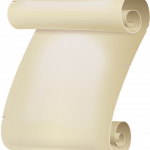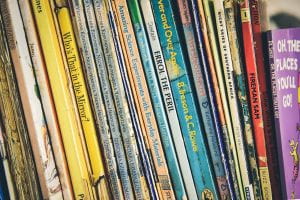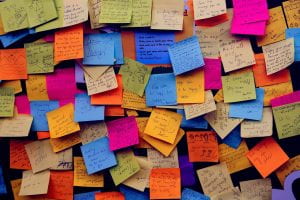1. How the subject has extended your knowledge and understanding of the role and nature of school library collections;
Collection development (CD) has been a life long process. My own bookshelf as a child was carefully curated and ordered with loving care and significant pride. Managing and developing a collection for a primary school of 950+ students is a different beast. ETL503 has unquestionably extended my knowledge and understanding of the responsibility of providing information and ideas to allow our school communities to thrive and function in society (IFLA/UNESCO, 1999). Building the collection to support the school community and to increase learning outcomes (NSW Department of education, n.d.) is one of the main roles of a teacher librarian (TL). The support of the TL across the school to carefully and continuously develop a library collection can positively influence the learning outcomes of the school.
Our entire collection was re-shelved in 2019 and in the interests of efficiency it made sense to weed at the same time. My blogpost (2019a), describes my rushed and haphazard approach. On reflection, I realise many more considerations were due. Sarah (2019a, January 7) in discussion forum 5.1 indicates a comprehensive list of methods for CD I will use in future.
Standard 3.4 of the Australian Professional Standards for teachers requires TLs to choose the most appropriate resources, including digital resources to engage students in learning (Australian Institute for Teaching and School Leadership (AITSL), 2018). This involves a balance between fiction and non-fiction, digital and non-digital, multiple formats and simple to complicated texts. It also involves a balance of ideas, equity for multicultural students, disability, censorship, gender, access and freedom of ideas. These are explored a little in my blogpost (2019, November 24). Preparation and regular evaluation and assessment are key to ensuring a relevant collection is built.
My key takeaways are:
- CD must firstly consider the school community.

- Continually update my knowledge of the ‘info-sphere,’ and the directions of educational issues, digital tools and library issues.
- Locate materials with consideration to users, curriculum, quality, reading levels, diversity, censorship, copyright, licensing, subscriptions and cost.
- Select materials according to a selection criteria and promote them.
- Use qualitative and quantitative data to assess and evaluate collections.
- Work collaboratively with all staff in the school and connect to the wider library community.
- Present a well written, useful CDMP to guide staff and provide focus.
- Do my very best to promote reading in all its forms.
2. The importance of a collection development policy as a strategic document.
Collection development (CD) and collection management are different aspects  of the TLs role. A definition of each appear in my blogpost (2019, November 20) It is absolutely crucial for every library to have a carefully written, detailed and regularly reviewed Collection Development and Management Policy (CDMP). A policy collaboratively written with staff, must reflect the nature of the society, interests of the local community and the specific curriculum needs of the school (IFLA, 2015, p. 33). The document must clearly state the purpose, content and scope as well as access to a variety of information sources. (IFLA, 2015,p. 33).
of the TLs role. A definition of each appear in my blogpost (2019, November 20) It is absolutely crucial for every library to have a carefully written, detailed and regularly reviewed Collection Development and Management Policy (CDMP). A policy collaboratively written with staff, must reflect the nature of the society, interests of the local community and the specific curriculum needs of the school (IFLA, 2015, p. 33). The document must clearly state the purpose, content and scope as well as access to a variety of information sources. (IFLA, 2015,p. 33).
Sarah (2019b) in her blog post suggests that deselection is misunderstood. How true in the context of our role developing collections to match the unique requirements of learners. Clarity of the process in a policy will demystify the why of throwing away resources. Additionally Nina (2019, November 24) in discussion forum 1.2 describes the diversity and multicultural nature of her school and the importance of these considerations when writing a CD policy. Rapid change requires continuous collaborative planning and a CDMP policy will anticipate change and envision a shared future (Johnson, 2009, p. 67).
CDMP and its implementation promote the professionalism, importance and leadership capacity of TLs. In the face of budget pressures, misunderstanding of a TLs capacity to positively impact outcomes, campaigns such as “Students Need Great School Libraries,” were born (Richardson, 2019, p. 5). Following on from my reading in ETL503, I visited Abbey’s Bookshop in Sydney and have chosen a selection of books to increase multi-lingual and cross-cultural content. Our library needs to keep pace with the changing backgrounds of families in our community and our school (Hughes, Hassell & Mancall, 2005, p. 35).
Advocacy for libraries and adequate staffing requires a high level of professionalism and involvement in curriculum initiatives at the school level by TLs. Good, well written policy documents guide libraries and their staff to build relevant collections for their community. In turn, this builds capacity for the entire profession.

3. How a collection development policy assists in future proofing the collection.
The IFLA trend Report (2019) describes broad, possible future trends:
- Uncertainty in government support for libraries – advocacy.
- Adopting a wholistic approach – responding to users multiple needs.
- Working at scale – international approach, not simply a local institution.
How does the school library fit into this context? Joyce Valenza (2010, December 3) says no textbook exists to guide TLs however CD needs to expand and the library must be accessible from everywhere. E-books and issues of access and cost in schools is difficult, however they will change the nature of CD in schools (O’Connell, 2015 ,p. 104). CDMP inclusive of e-book access will prepare a TL for future-proofing collections. Valenza (2019, December 31) lists S.M.A.R.T. goals (Specific, Measurable, Attainable, Relevant, Time-bound.) as moving a library and its community forward and a CDMP will strategically achieve these goals.
Just as my childhood bookcase was meticulously curated and organised, my school library will be guided by CDMP and procedures for the benefit of our students futurity.
References
Australian Institute for Teaching and School Leadership. (2018). Australian Professional Standards for Teachers. Retrieved from https://www.aitsl.edu.au/docs/default-source/national-policy-framework/australian-professional-standards-for-teachers.pdf?sfvrsn=5800f33c_64
Australian Library and Information Association Schools (ALIA Schools)., & Victorian Catholic Teacher Librarians (VCTL). (2017). A manual for developing policies and procedures in Australian school library resource centres. 2nd edition. Retrieved from https://asla.org.au/resources/Documents/Website%20Documents/Policies/policies-procedures-manual_ed2.pdf
Hahn, S. (2019b, December 7). Re: Selection and deselection – ETL503 Module 2, Charles Sturt University, School of Information Studies. [Blog comment]. Retrieved from https://thinkspace.csu.edu.au/sarahhahn/2019/12/07/selection-and-deselection-etl503-module-2/
Hahn, S. (2020a, January 7). Re: Collection analysis techniques – ETL503 Module 5.1, Charles Sturt University, School of Information Studies. [Discussion forum 5.1]. Retrieved from https://interact2.csu.edu.au/webapps/discussionboard/do/message?action=list_messages&course_id=_38050_1&nav=discussion_board_entry&conf_id=_74553_1&forum_id=_169584_1&message_id=_2639996_1
Hughes-Hassell, S. & Mancall, J. (2005). Collection management for youth: responding to the needs of learners. [ALA Editions]. Retrieved from https://ebookcentral.proquest.com/lib/csuau/reader.action?docID=289075
International Federation of Library Associations and Institutions (IFLA). (2019). IFLA Trend report. Retrieved from https://trends.ifla.org/update-2019
International Federation of Library Associations and Institutions/United Nations Educational, Scientific and Cultural Organization. (2006). IFLA/UNESCO school library manifesto 1999. School Libraries and Resource Centers Section. Retrieved from https://www.ifla.org/publications/ifla-unesco-school-library-manifesto-1999
Johnson, P. (2009). Fundamentals of collection development and management. Chicago, ALA Editions.
New South Wales Department of Education. (n.d.). Handbook for school libraries. Retrieved from https://education.nsw.gov.au/teaching-and-learning/curriculum/media/documents/schoollibrarieshandbook2015.pdf
Kempinger, N. (2019, November 24). Considering the local library. [Discussion forum 1.2]. In ETL503, Resourcing the Curriculum. Retrieved from Charles Sturt University, School of Information Studies, Interact 2: https://interact2.csu.edu.au/webapps/discussionboard/do/message?action=list_messages&course_id=_38050_1&nav=discussion_board_entry&conf_id=_74553_1&forum_id=_169572_1&message_id=_2591881_1
Nicklin, D. (2019a, November 21). Module 2.2: These journal articles open up the conversation about what is at stake. What is your thinking now about the balanced collection you might foster in your school library? What other aspects, focus points or issues do you wish to explore further?. [blog comment]. Retrieved from https://thinkspace.csu.edu.au/debnicklin/2019/11/24/module-2-2-these-journal-articles-open-up-the-conversation-about-what-is-at-stake-what-is-your-thinking-now-about-the-balanced-collection-you-might-foster-in-your-school-library-what-other-aspects/
Nicklin, D. (2019b, November 20). Module 2.1. [blog comment]. Retrieved from https://interact2.csu.edu.au/webapps/discussionboard/do/message?action=list_messages&course_id=_38050_1&nav=discussion_board_entry&conf_id=_74553_1&forum_id=_169572_1&message_id=_2585959_1
O’Connell, J., Bales, J., & Mitchell, P. (2015). [R]Evolution in reading cultures: 2020 vision for school libraries. The Australian Library Journal, 64(3), 194-208, DOI:10.1080/00049670.2015.1048043
Richardon, N. (2019). Students need great school libraries. Connections, 109(2), pp 4-5.
Valenza, J. (2010, December 3). A revised manifesto. [Blog comment]. School Library Journal. Retrieved from http://blogs.slj.com/neverendingsearch/2010/12/03/a-revised-manifesto/
Valenza, J. (2019, December 31). The case for strategic planning. [Blog comment]. School Library Journal. Retrieved from http://blogs.slj.com/neverendingsearch/2019/12/31/the-case-for-strategic-planning/?_scpsug=crawled,7946136,en_1f2bca7139718ccda55a356bbd963454aca4409e02b735a07b88bc31a0bbad66#_scpsug=crawled,7946136,en_1f2bca7139718ccda55a356bbd963454aca4409e02b735a07b88bc31a0bbad66







